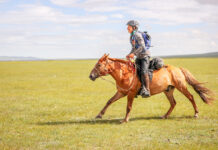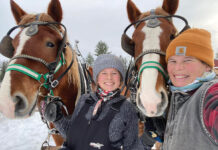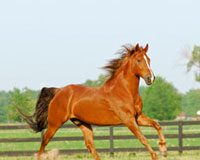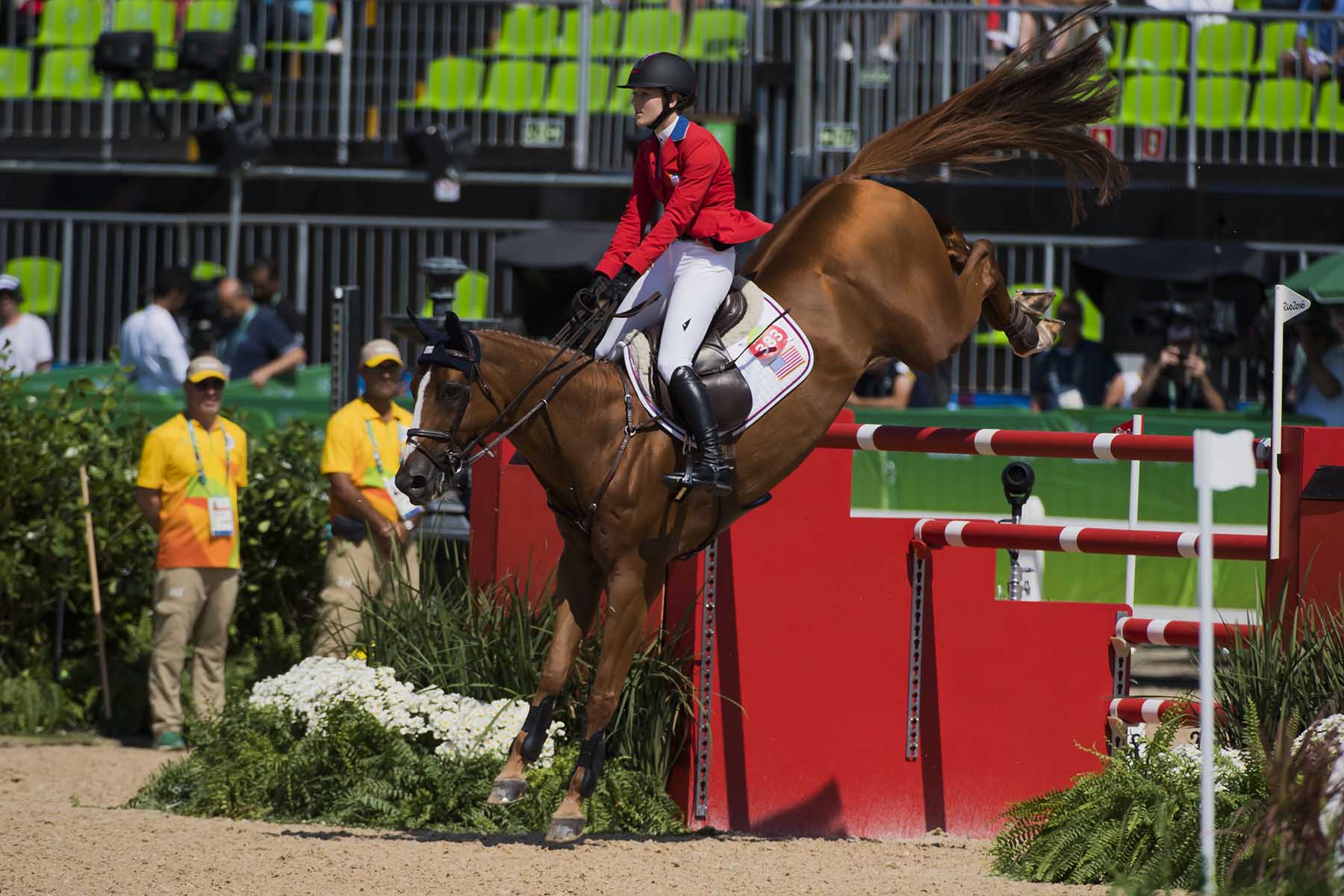
Here’s our final post from Rio de Janeiro and the 2016 Olympic Games. If you missed them, go back and read part one, where we look at the eventing competition and some of the scary events that took place around the equestrian venues, and part two, where we discuss dressage and everyday life for residents of Rio.
Show Jumping Caps Olympic Equestrian Competition
By now you know that the U.S. Show Jumping Team, under the guidance of Chef d’equipe Robert Ridland, performed very well and took the silver medal in commanding fashion, finishing with a total of only five faults. They were just two points behind the team from France – a team which was on fire during the entire competition and only racked up three time faults over the two team final rounds to take gold.
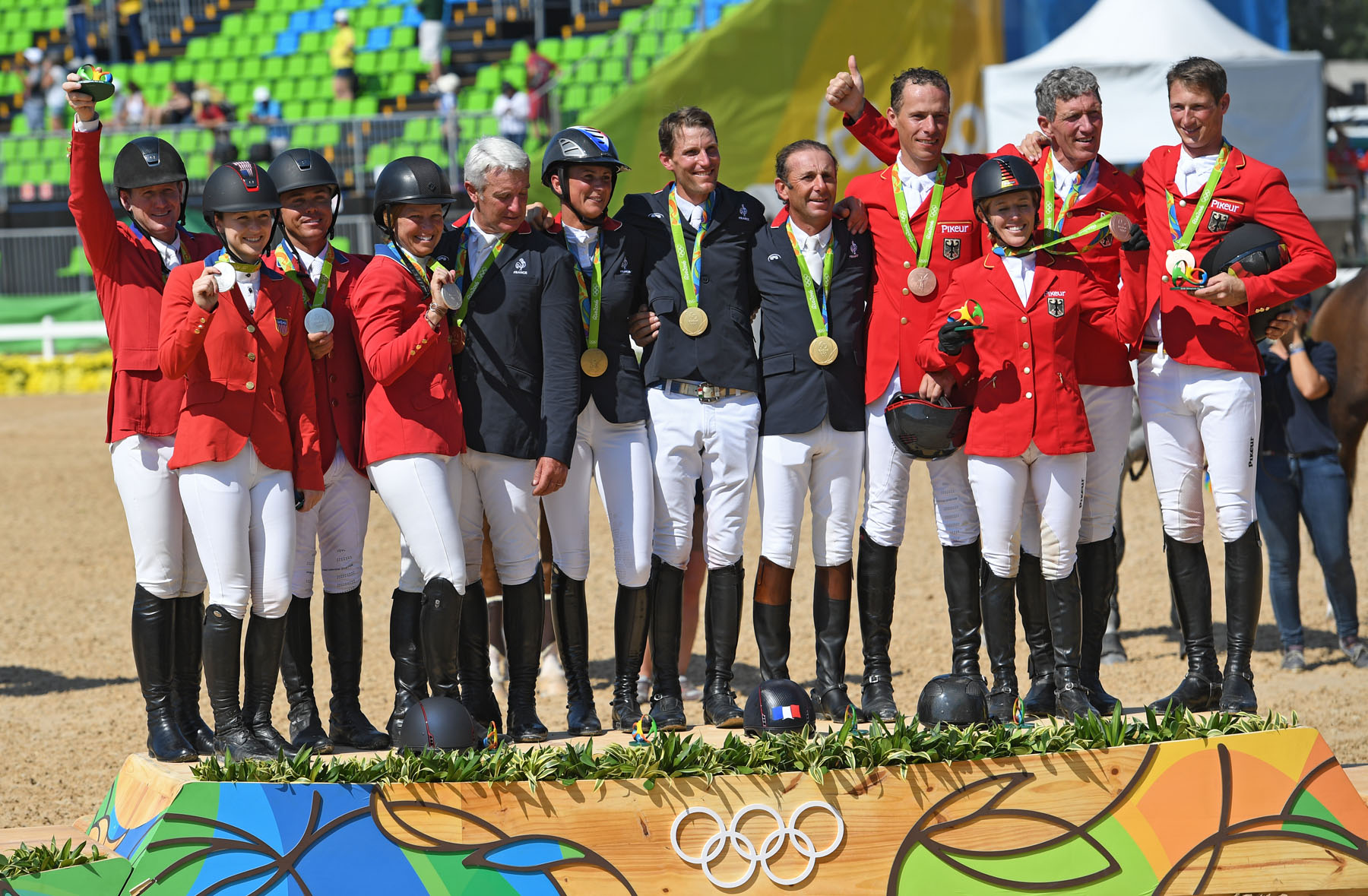
There was a jump-off for bronze between Canada and Germany with the German riders performing flawlessly in that round to take the bronze. Team Brazil had high hopes for a medal in their home country. They were neck and neck for third for awhile, but had rails down in the final team round and had to settle for fifth. That didn’t stop their fans from thunderous applause any time a Brazilian rider entered the ring and we couldn’t help rooting for them too.
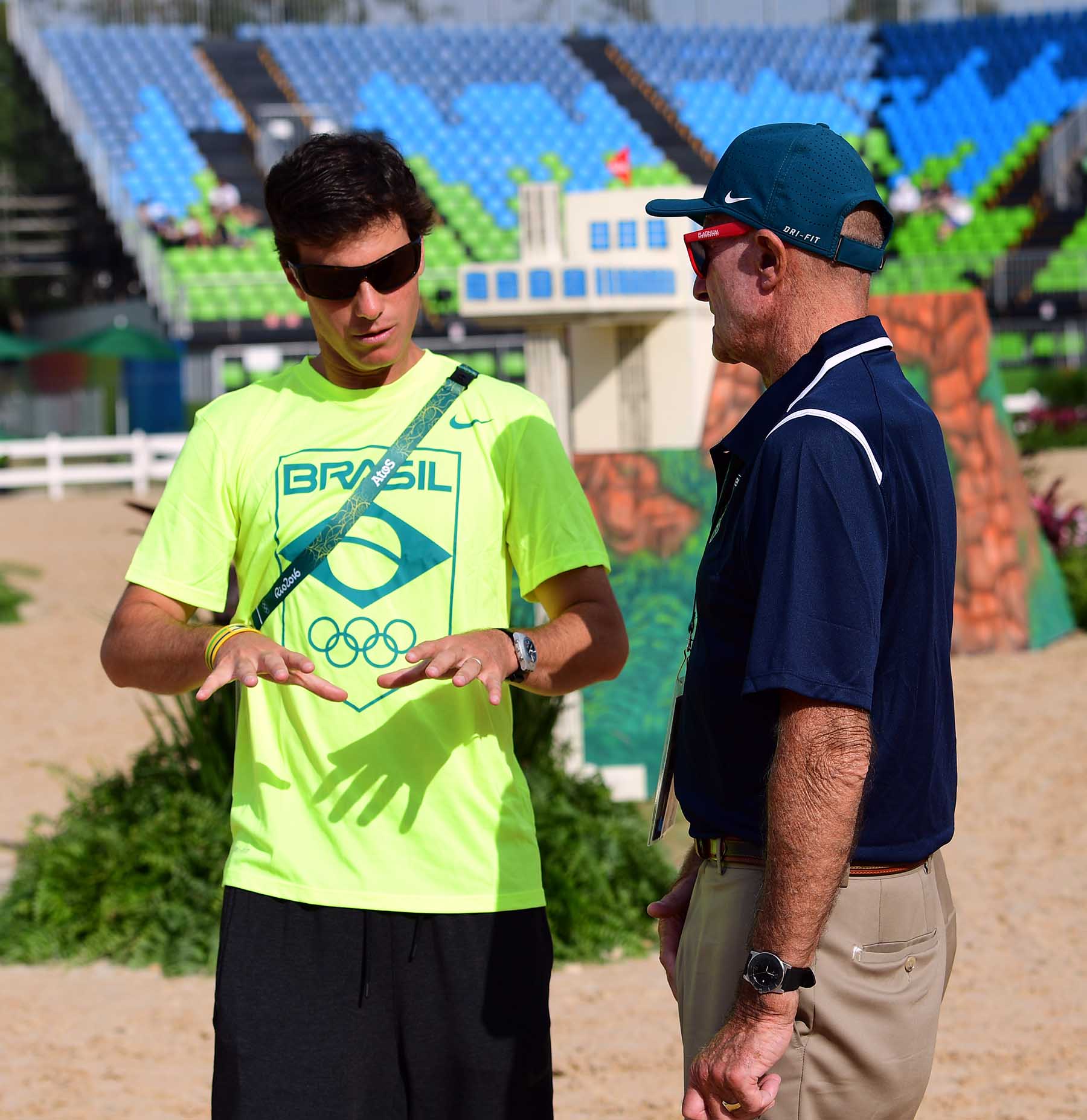
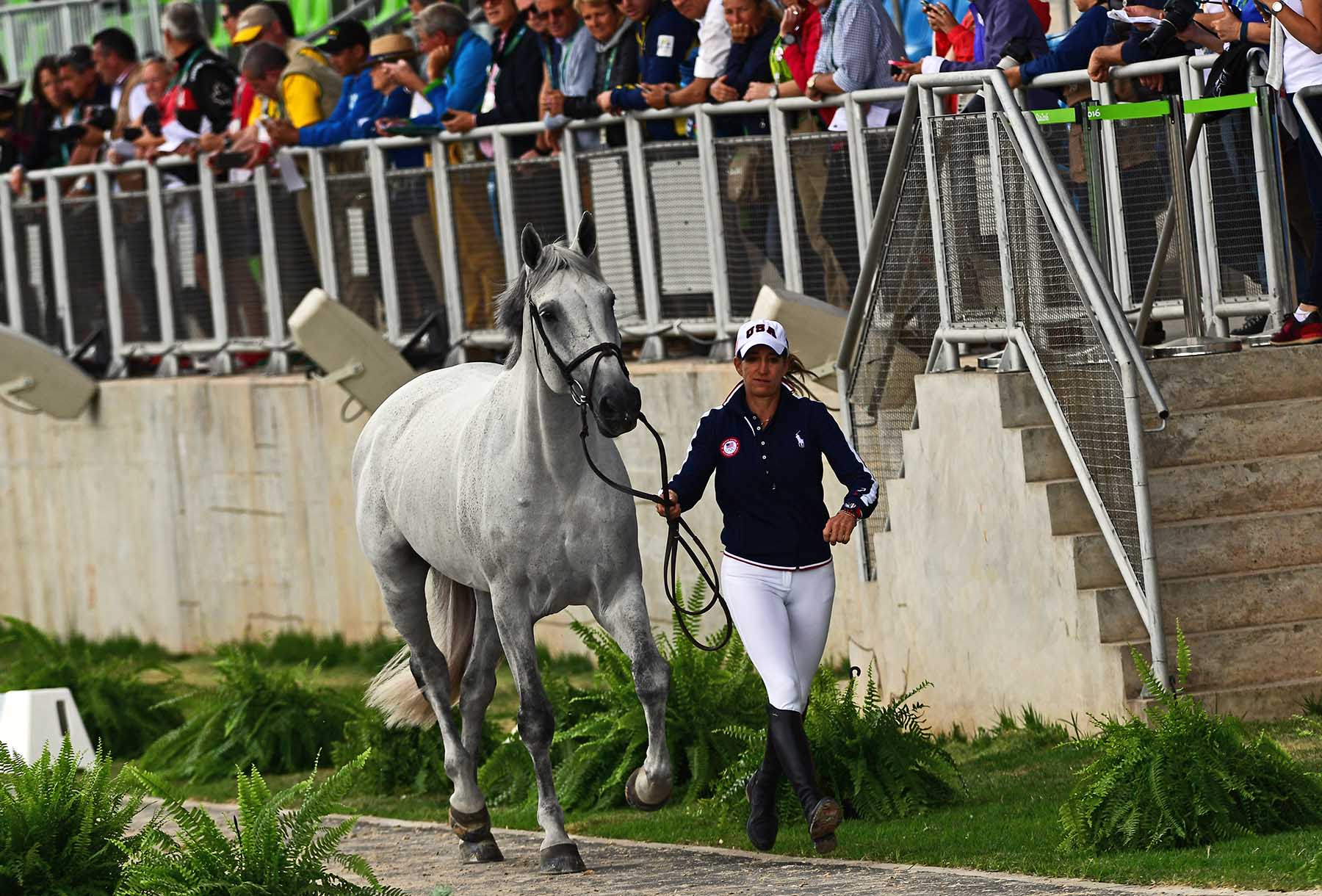
From the start of the jumping competition all the way through, there were bits of drama and suspense. Two riders on the first day of competition were disqualified by the ground jury, one for overuse of spurs (Belgium’s Nicola Phillippaerts who rode Zilverstar T) and the other for overuse of whip (The Netherlands’ Jur Vrieling who rode Zirocco Blue). Since team and individual competitions are considered separate events in the Olympics, both riders were allowed to continue as members of a team, but were not allowed to move on in the individual rounds.
Two days later two more riders were disqualified for overuse of spurs in the second individual qualifier/team round one: Cassio Rivetti from the Ukraine who rode Fine Fleur du Marais and Stephen de Freitas Barcha from Brazil who rode Landpeter do Feroleto. Since they were disqualified during the team competition their teams were each one man down. This meant the scores of the other three members on their teams counted and the luxury of a “drop score” was no longer an option. The same was true for Team France when their rider Penelope LePrevost, after posting a clear round in the first team round, fell from Flora de Mariposa and were eliminated in the second.
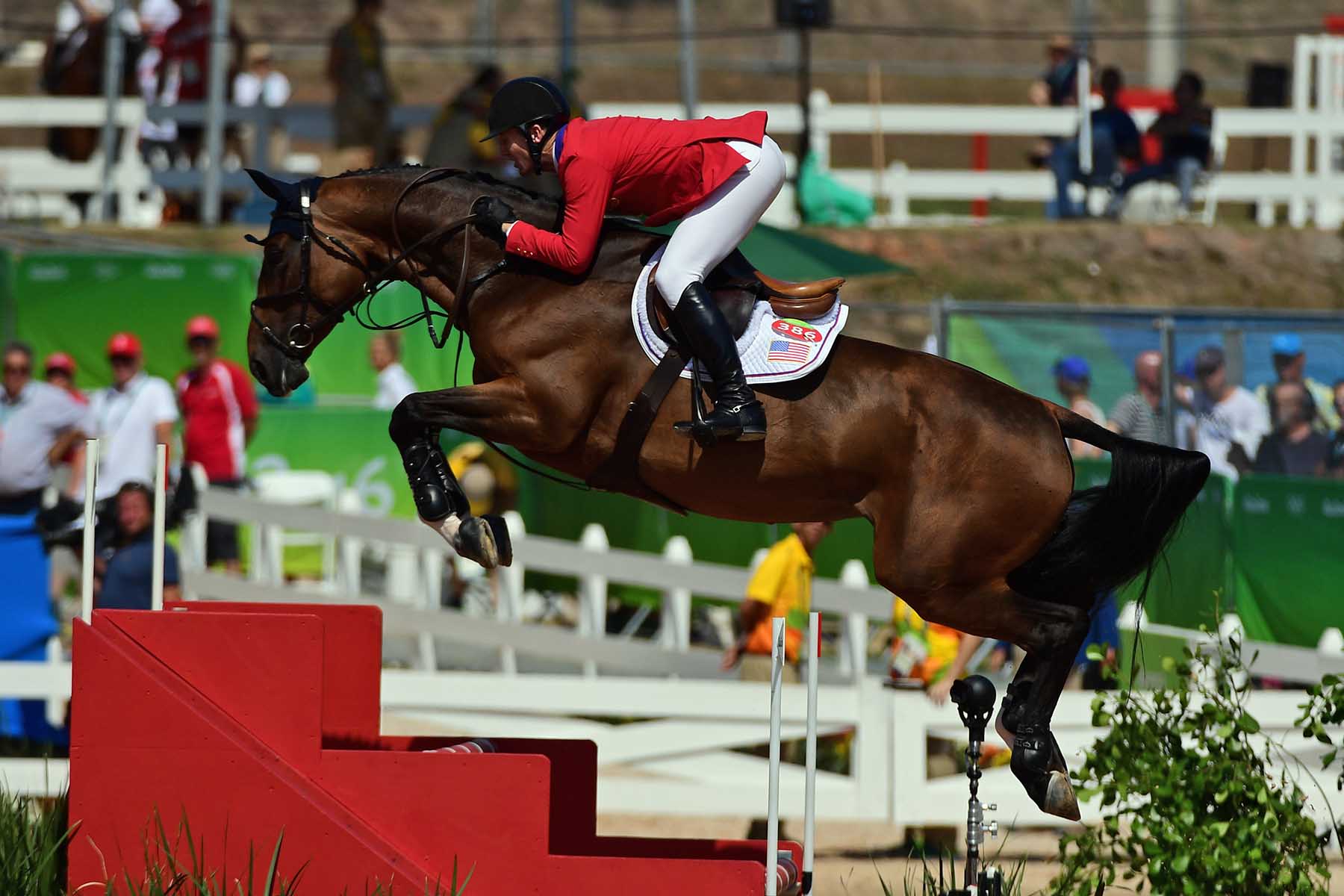
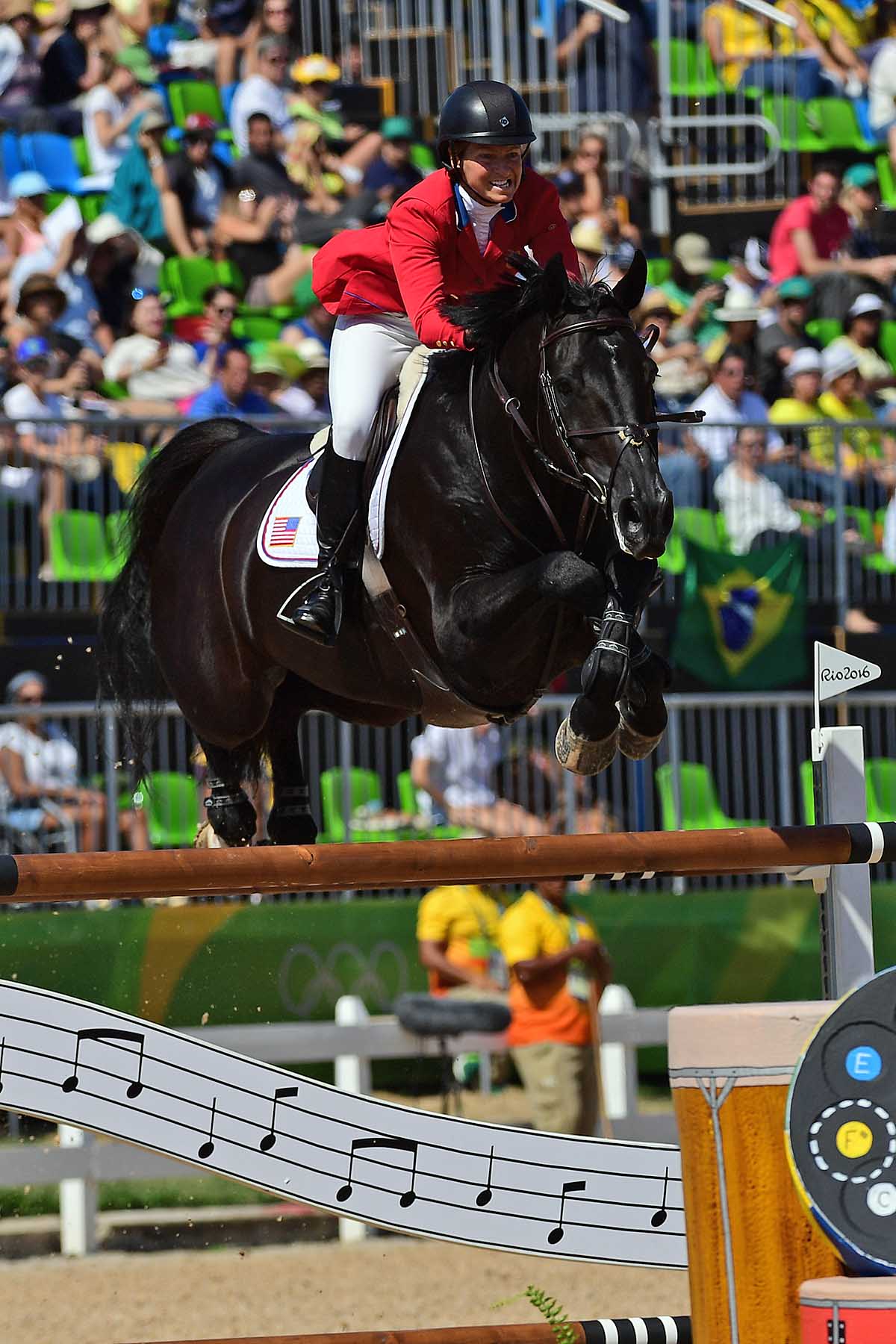
Team U.S.A. really felt the loss of anchor rider Beezie Madden when it was announced that Cortes ‘C’ had injured a tendon and had to be withdrawn before the start of the third day of competition. “We are heartbroken to announce that Cortes ‘C’ sustained a tendon injury in yesterday’s competition and will be unable to compete for Team USA today. We are confident that he will make a full recovery. While we had hoped to do everything we could to help the USA towards a medal today, Tiny’s [Cortes ‘C’] best interests must come first.”
After a demanding team final course designed by Brazilian Guilherme Jorge, U.S. Chef d’equipe Robert Ridland was very pleased with his team’s silver medal and had high praise for his riders. “The course was tremendous, a real Olympic championship course. We knew that when we walked it. We were pretty sure that it wasn’t going to be won on zero [faults]. All our scores had to count today; we knew that. It didn’t affect any of them. They were all unbelievable. Unbelievably focused, they knew what their job was and they got it done.”
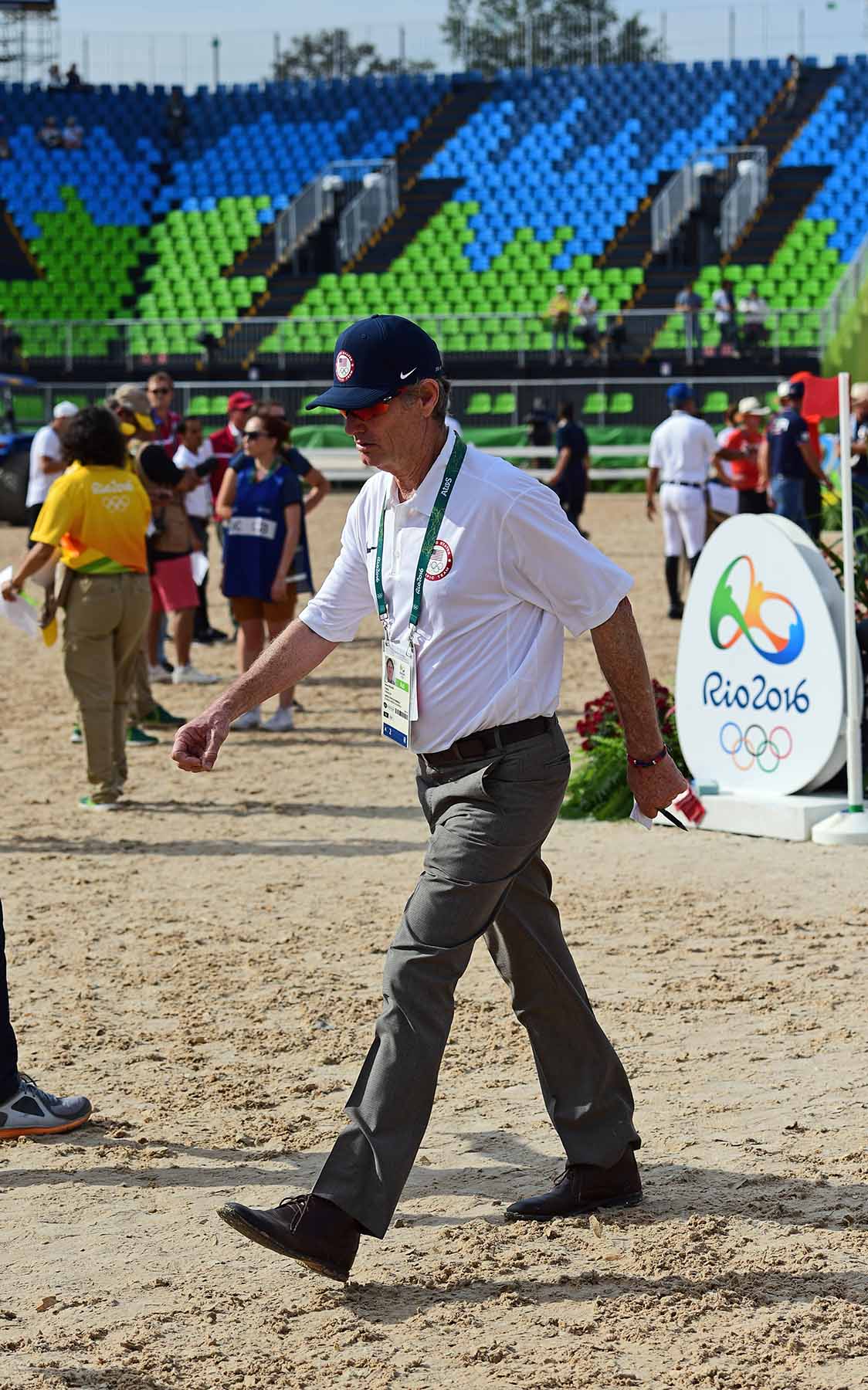
Jorge commented on his thoughts about designing a course for the Olympics in his home country and on sharing the knowledge in order to further the sport. “For sure it’s a big honor to design the courses for the Olympic here in Rio. I was here already in 2007 for the Pan American Games, so I knew that it is a really nice venue for the competition. The team that I have here behind me – all of the design team – they have a reason to be proud.”
“Twenty years ago I went to my first Olympics in Atlanta in 1996 as a volunteer to work with Linda Allen,” he continued. “She gave me the opportunity to be there and I try to do this inviting as many course designers as possible to come. That is why I have this big group, because I think it is a fantastic opportunity and big for our sport. They helped me a lot throughout the whole process.”
Six Way Jump-Off for Gold In Individual Jumping
The big news in the individual show jumping competition was the six-way jump-off for the gold medal. Although we can’t confirm, this may have been the first time that six have tied for first to force a jump-off in an Olympic Games.
The jump-off contestants were: Sheikh Ali Al Thani riding First Devision, Qatar; Kent Farrington riding Voyeur, U.S.A.; Peder Fredricson riding All In, Sweden; Steve Guerdat riding Nino des Buissonnets, Switzerland; Eric Lamaze riding Fine Lady 5, Canada, and Britain’s Nick Skelton riding Big Star, Great Britain.
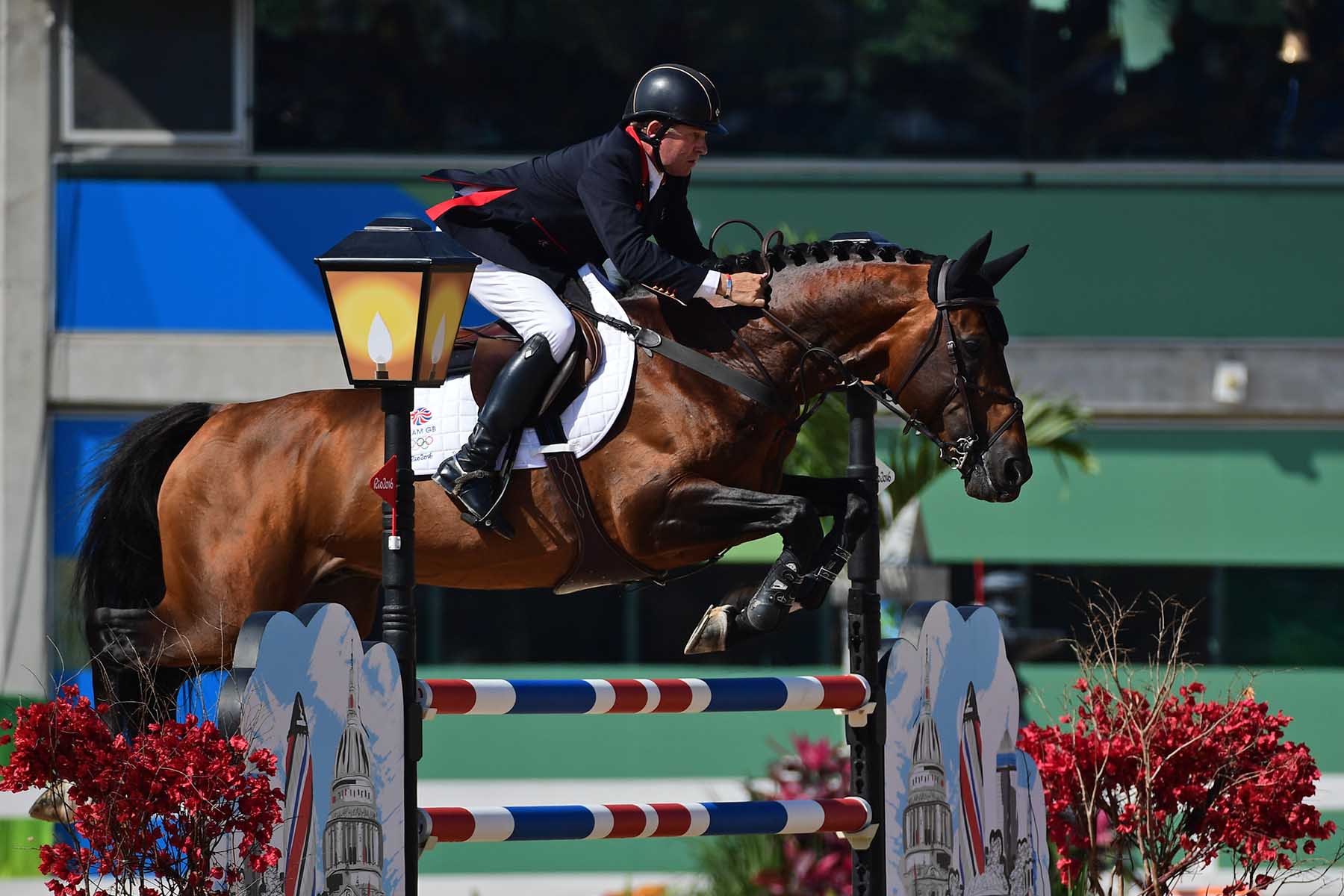
In the end it was Skelton, 58, and the 13-year-old Dutch Warmblood stallion Big Star capturing gold with a blistering clear round as they were first to go around the course. Sweden’s Fredricson and All, who were the only other pair to go clear over the shortened course, took the silver and Eric Lamaze and Fine Lady had one rail down, but with a very fast trip to grab the bronze. Guerdat and Nino de Buissonnets were slightly slower with one rail down to finish fourth. The U.S.A.’s Farrington and Voyeur, who had jumped clear in every round over the four days of competition up to the jump-off, dropped two rails to finish fifth.
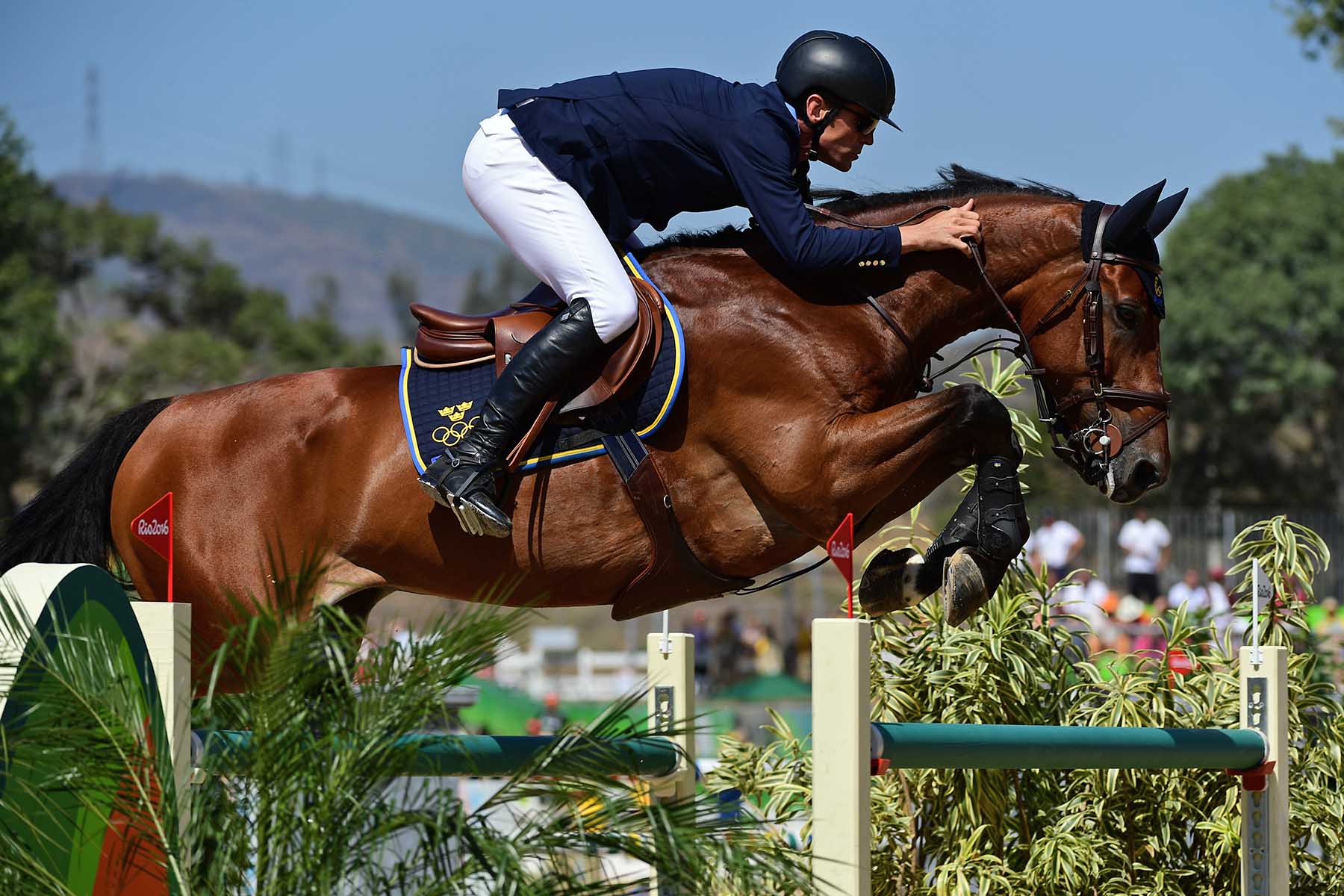
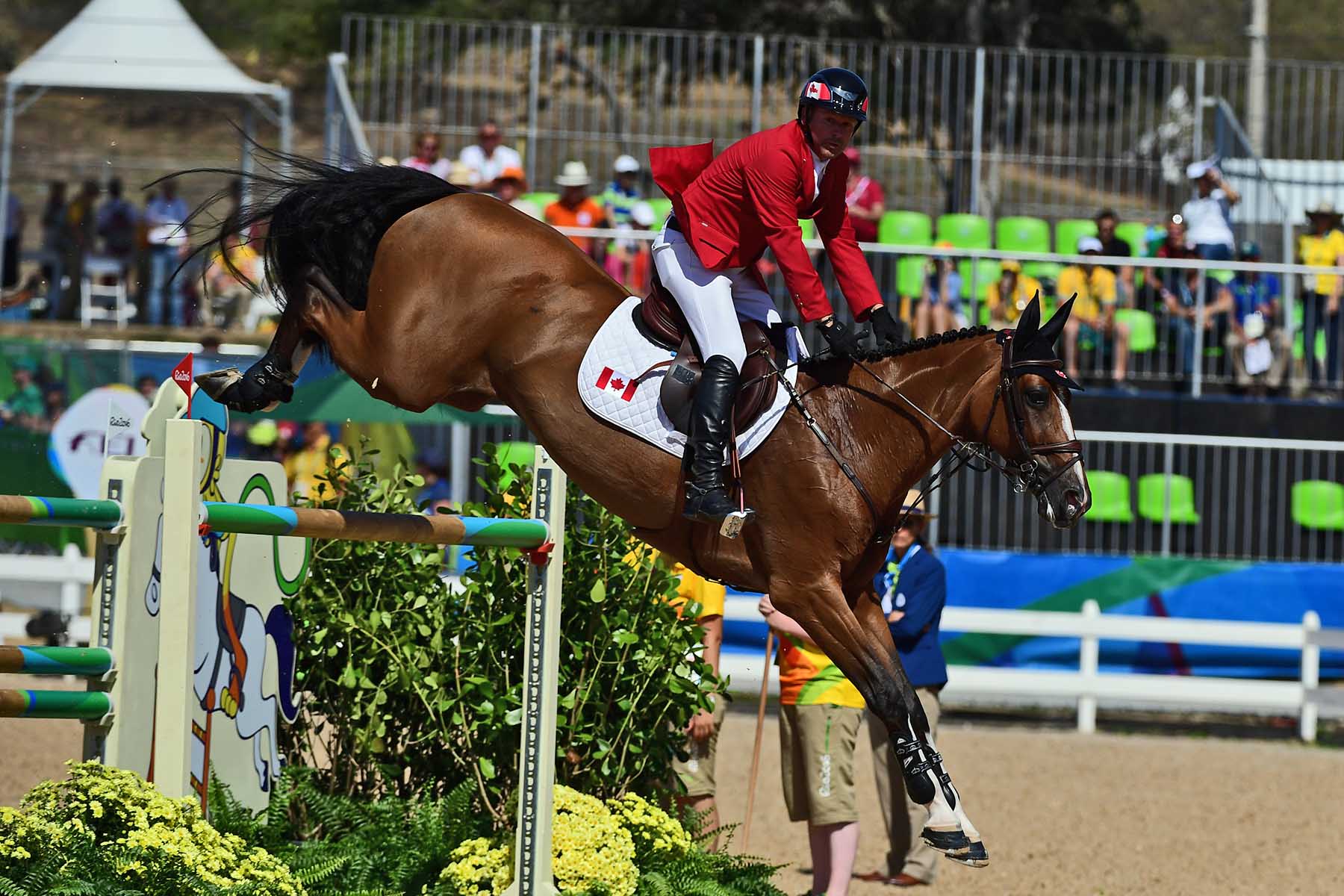
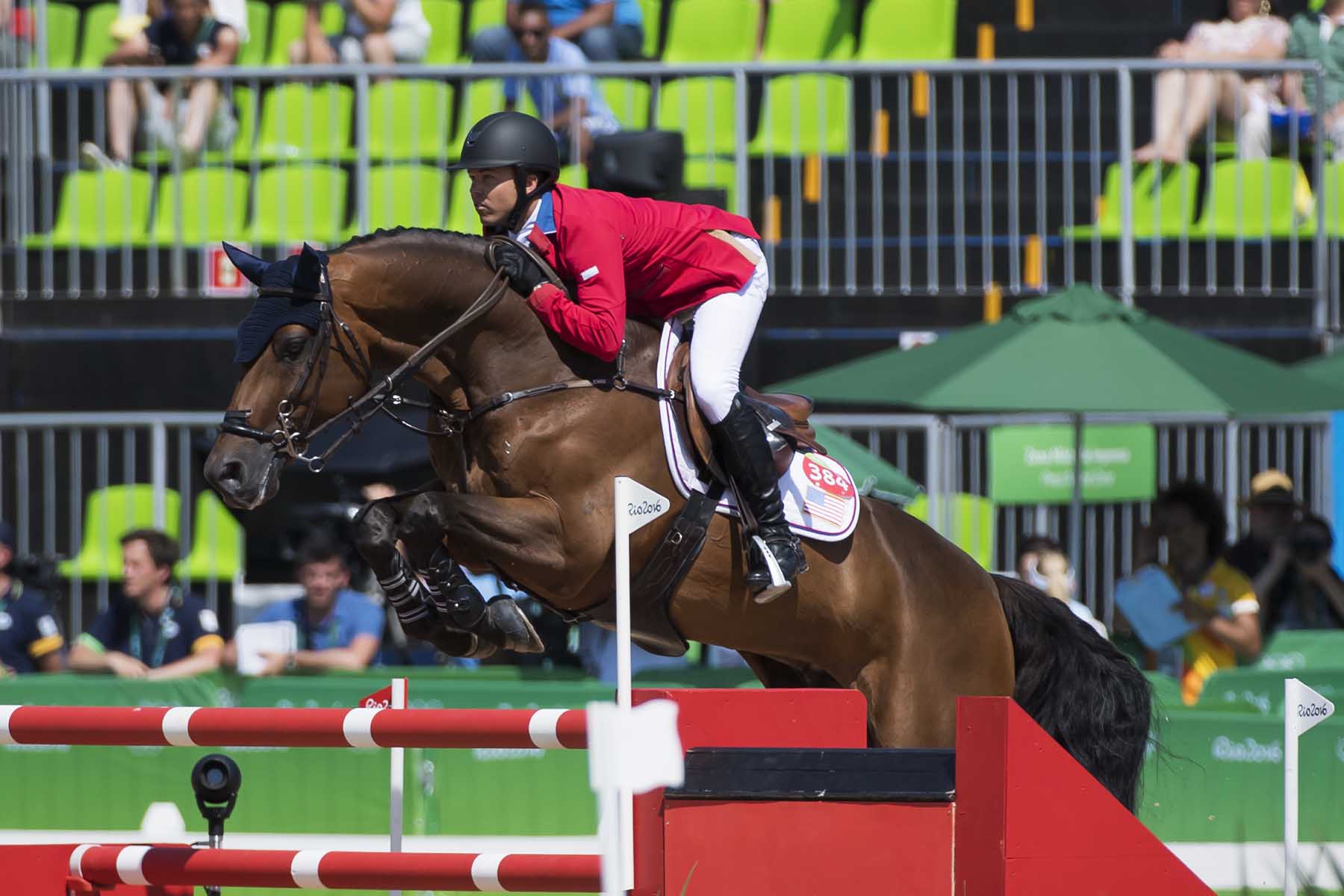
Skelton, who is the second-oldest Brit ever to win an Olympic medal and has come back from a broken neck and hip replacement over his long career, credited his staff and veterinarians for bringing Big Star back from two different injuries since 2013. Obviously very fond of Big Star, he hinted that when the stallion retired he would too. “Today [Big Star] was absolutely amazing. The last competition he won was the Aachen grand prix in 2013 – it has been two years to get him back. It has taken a lot of work, but I always knew if we could get him right then he could do this. He is an absolutely amazing horse. He has all the right attributes and he is the best horse I am ever likely to have. I have nursed him and nursed him, and he has come good for me – this is for him.”
Protests and Security at the Rio Olympics
The Rio Olympic Games were filled with contrasts. On one hand you had a modern city with many brand-new venues and on the other you had many residents living in poverty. Case in point was the new Olympic Main Press Center (MPC) and the adjacent Media Transportation Mall (MTM) which were situated just to the east of the Olympic Village.
It seems that the Olympic planners must have bulldozed and paved over what was a low-income neighborhood to construct the Olympic Village leaving only one small row of favela houses, and what appeared to be some sort of neighborhood center, remaining at the edge of the MTM. We passed these houses twice every day while in Rio as we used the media transportation system. During the first week of the Games, there was a graffiti message in Portuguese on the outer wall of the favela complex. From what we could decipher it referred to social injustice.

By week two of the Games, the protest message had been whitewashed away. The next day a new message, this time in English, expressed outrage at the original message being erased. The day after that, the protest message was back and then painted over the day after and the cycle continued throughout our time at the Games. The protesters were determined that the media from around the world would see their plight.
On a related topic, when we returned home to Indiana our parents expressed surprise that there were no terrorist attacks during the Games in Rio. We’re not sure if it was simply because none were planned or because of the massive security force that we observed watching over the Games. Everywhere you looked you saw uniformed officers – police and military – and many armored vehicles from jeep size up to full-fledged tanks.
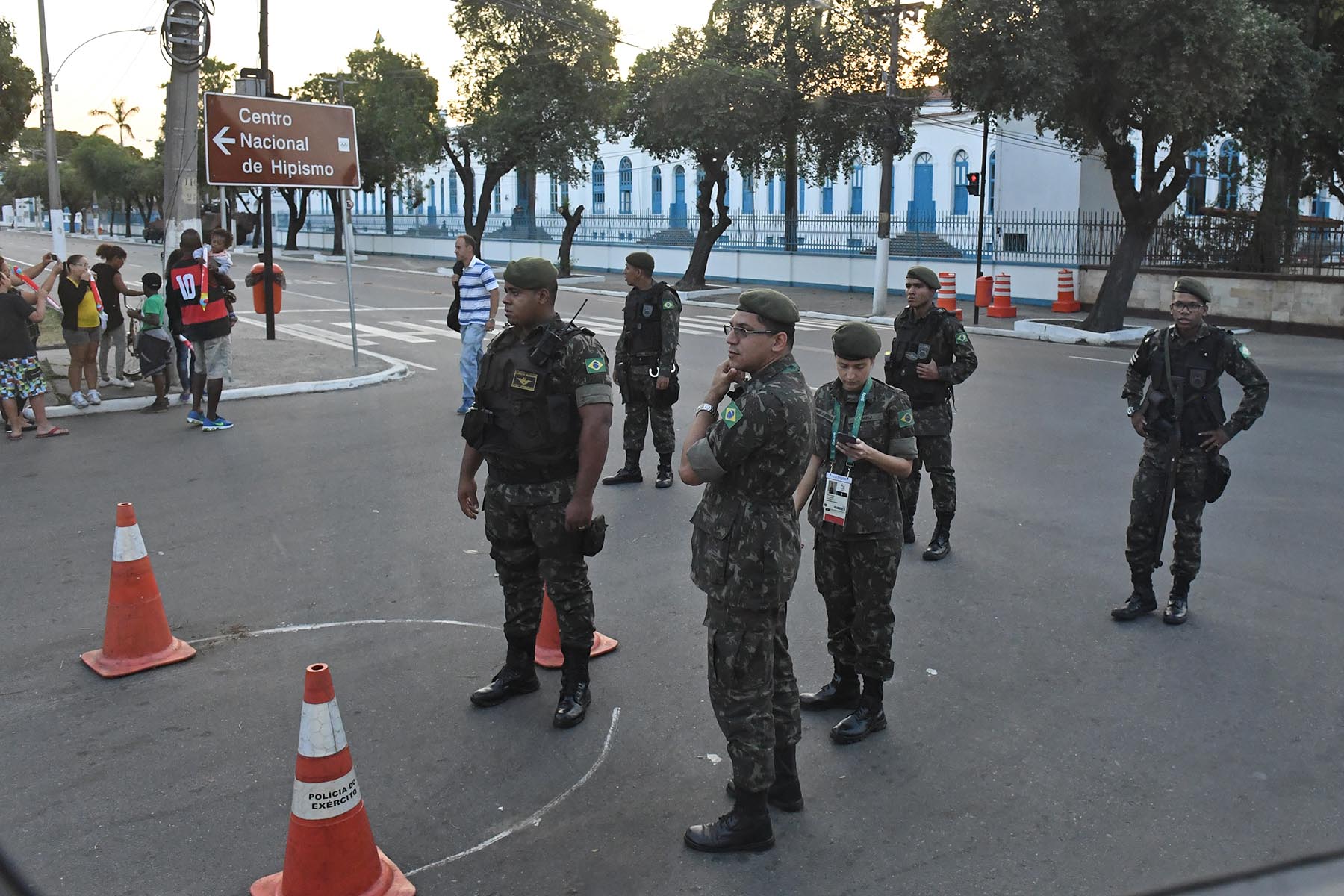
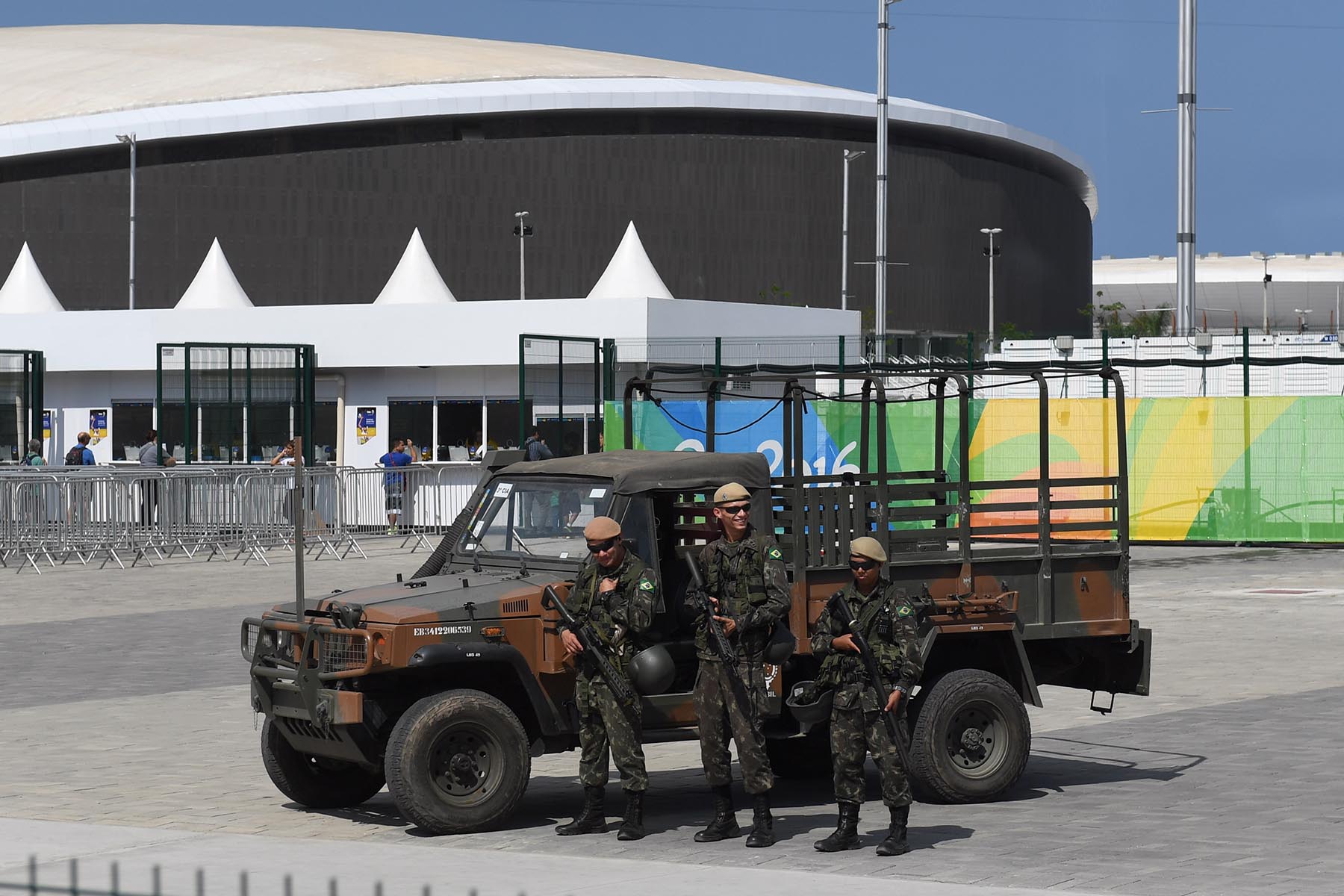
Things We Will Miss From the Rio Olympics
The people:
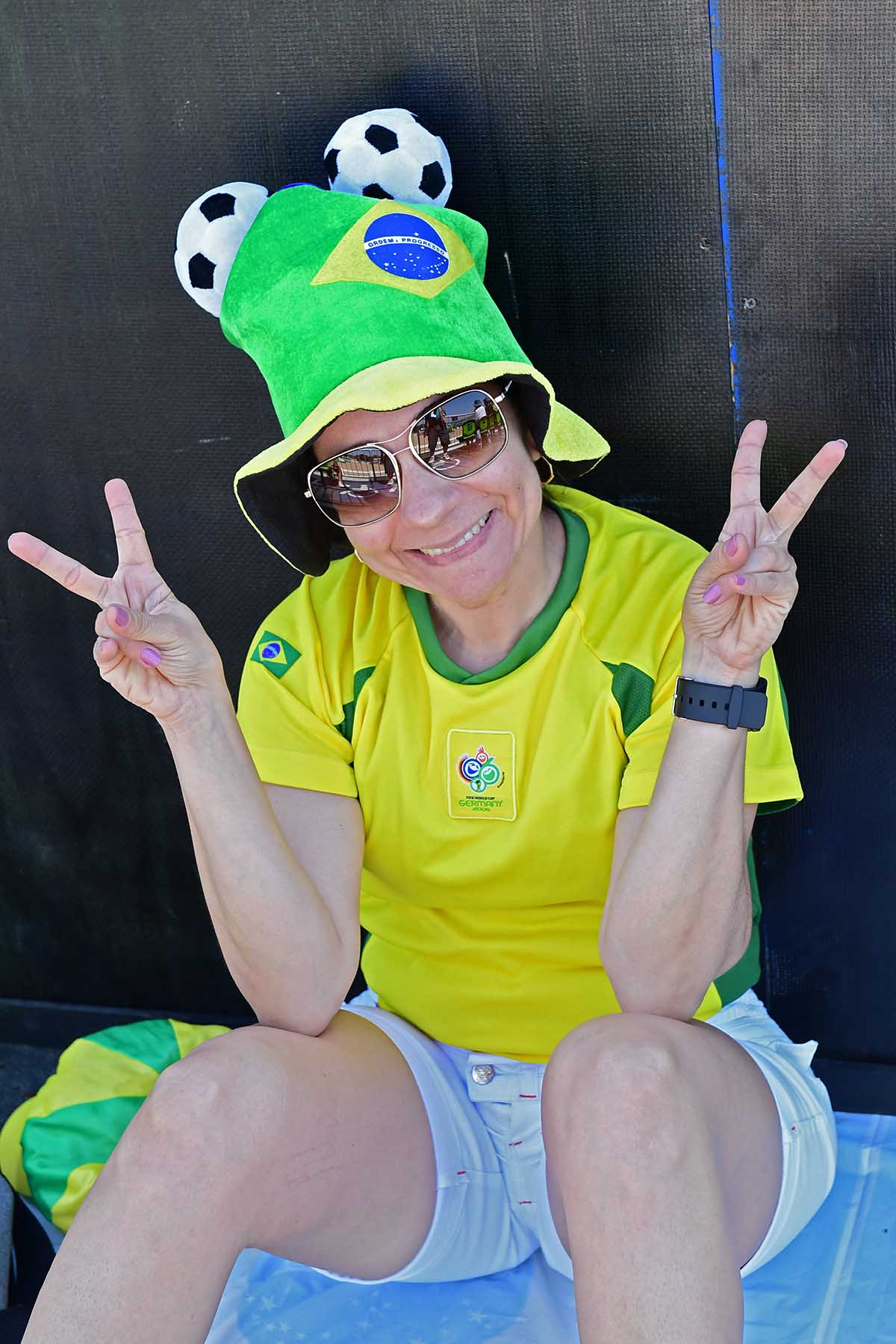
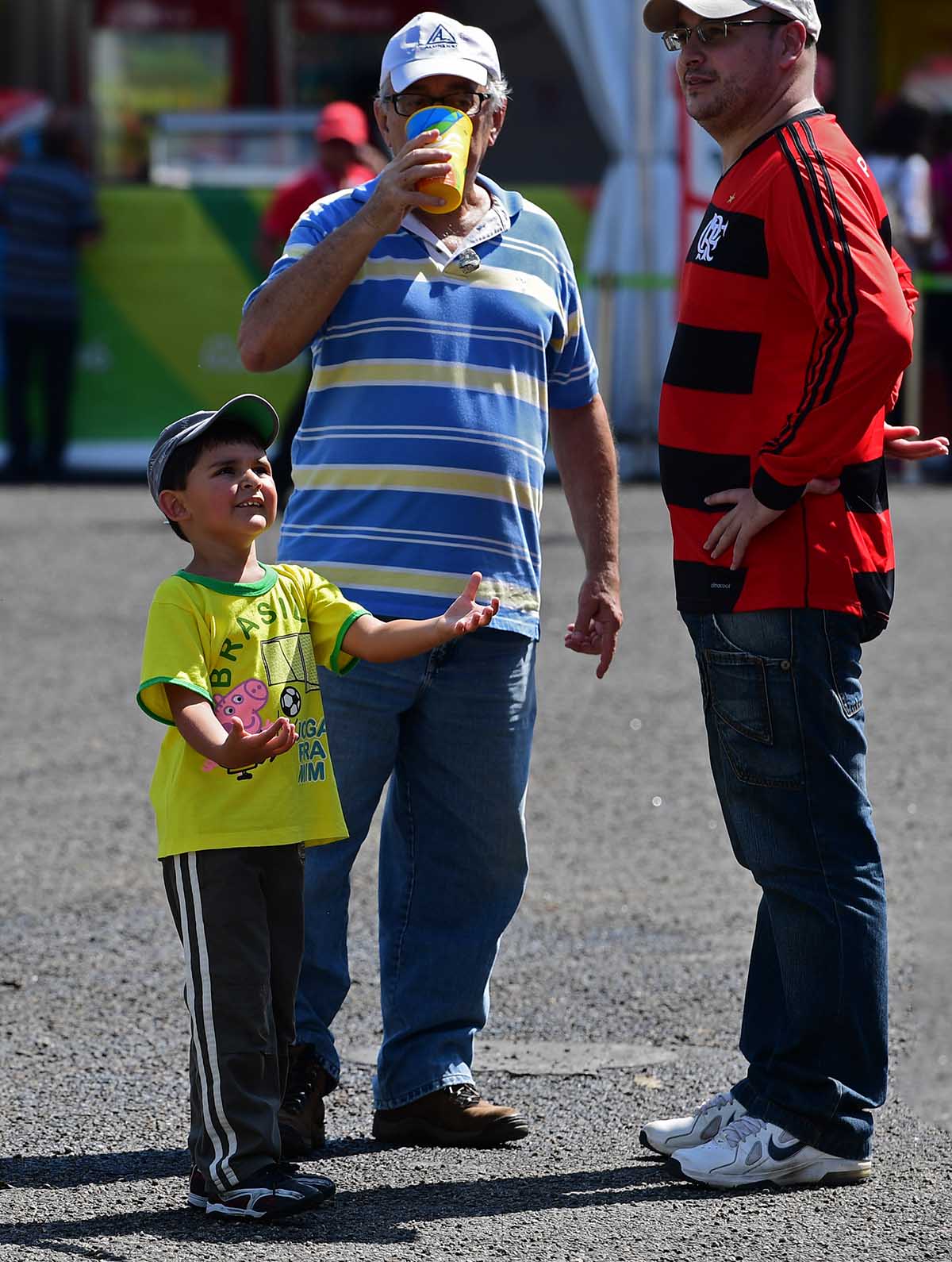
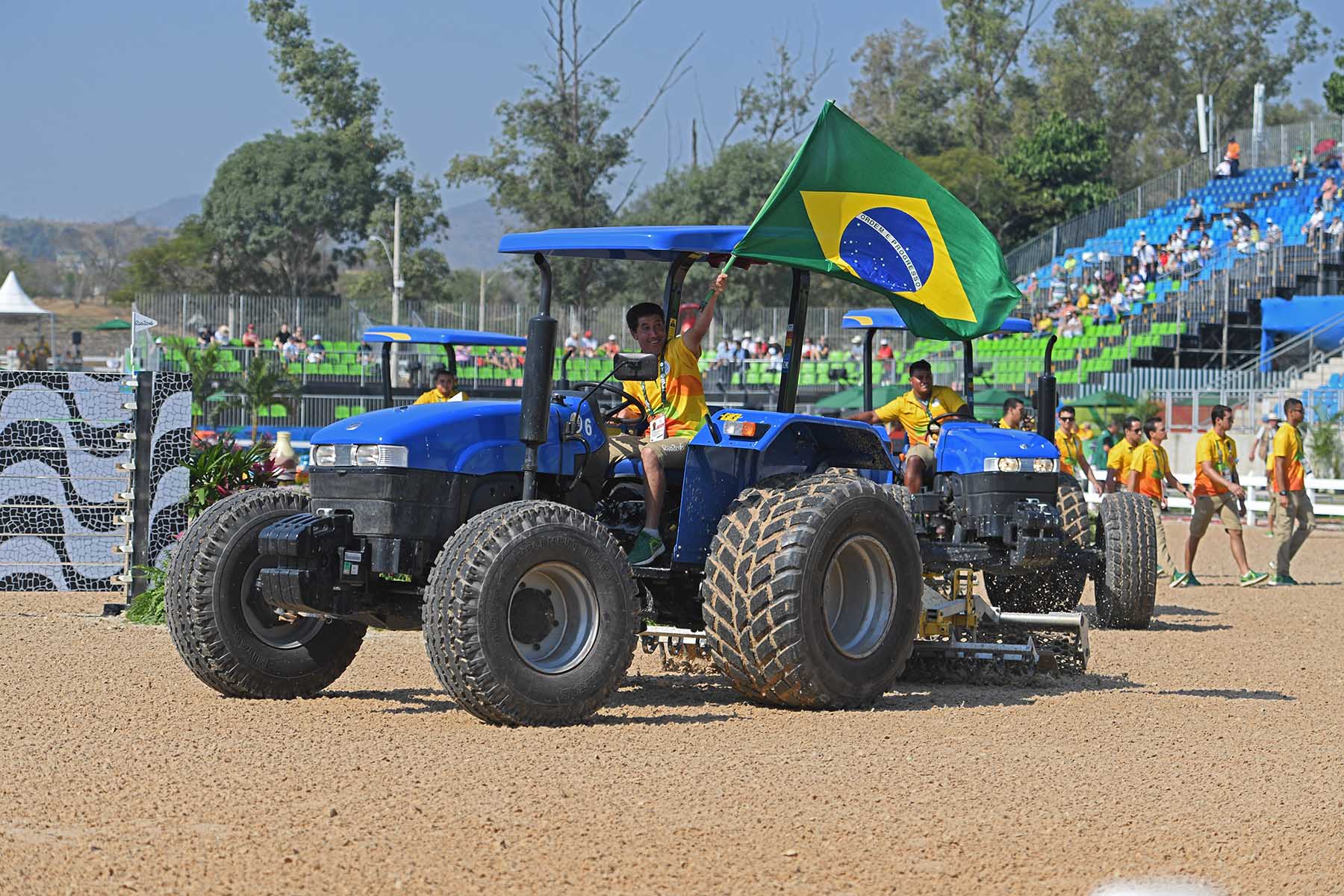
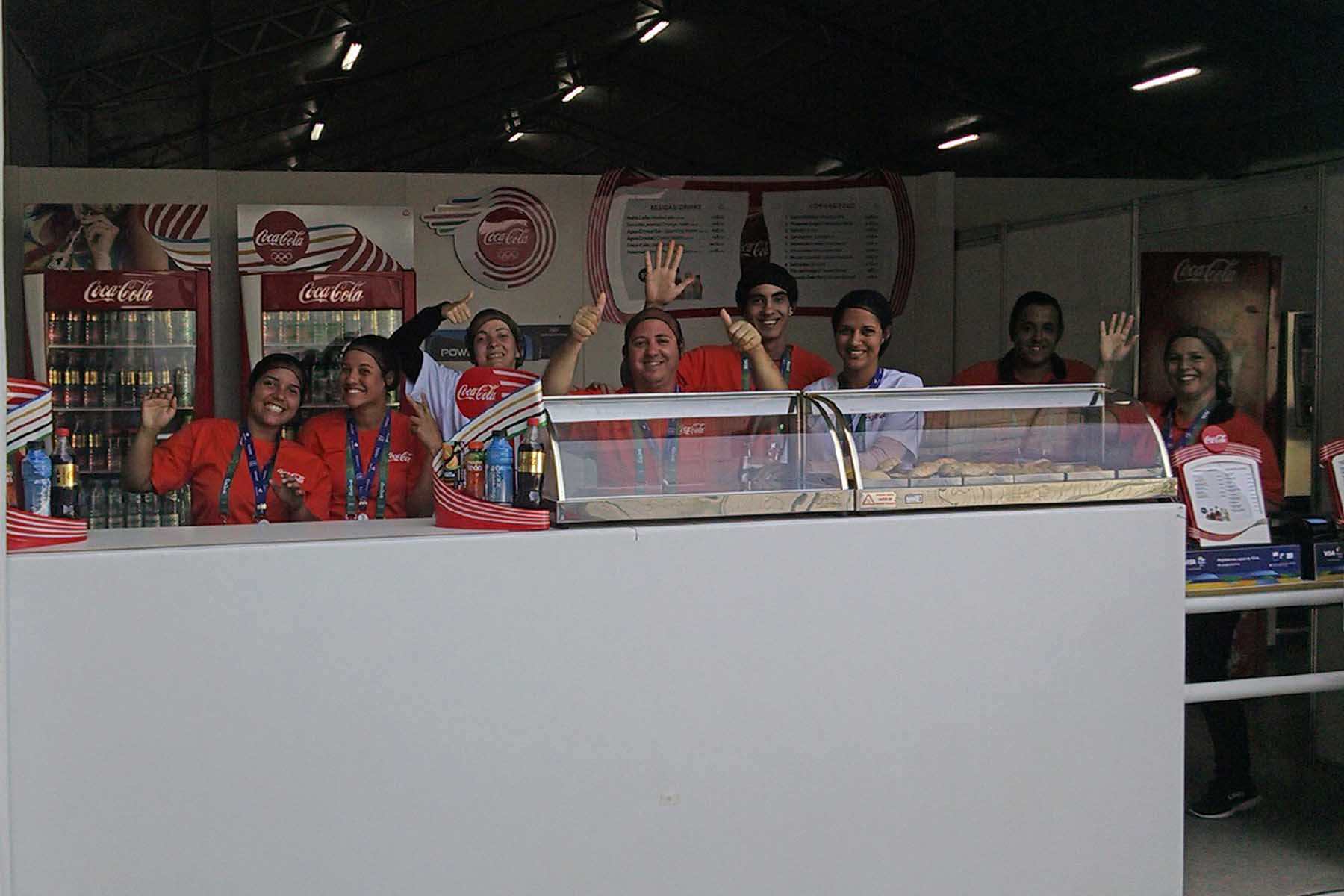
The view from our media bus windows. Each day our bus ride to work served as a mini tour of the area and a roadmap to the Olympic venues.
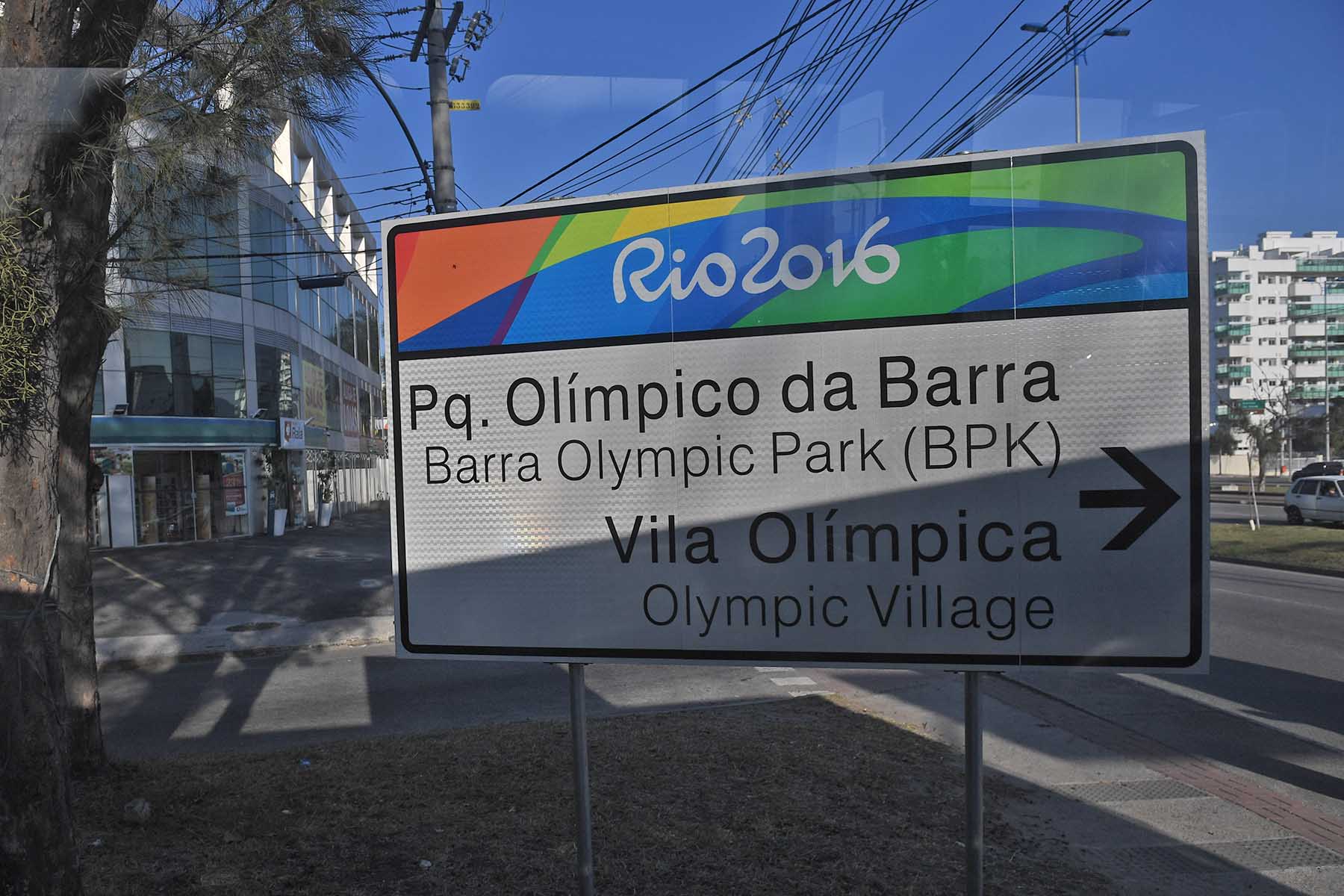


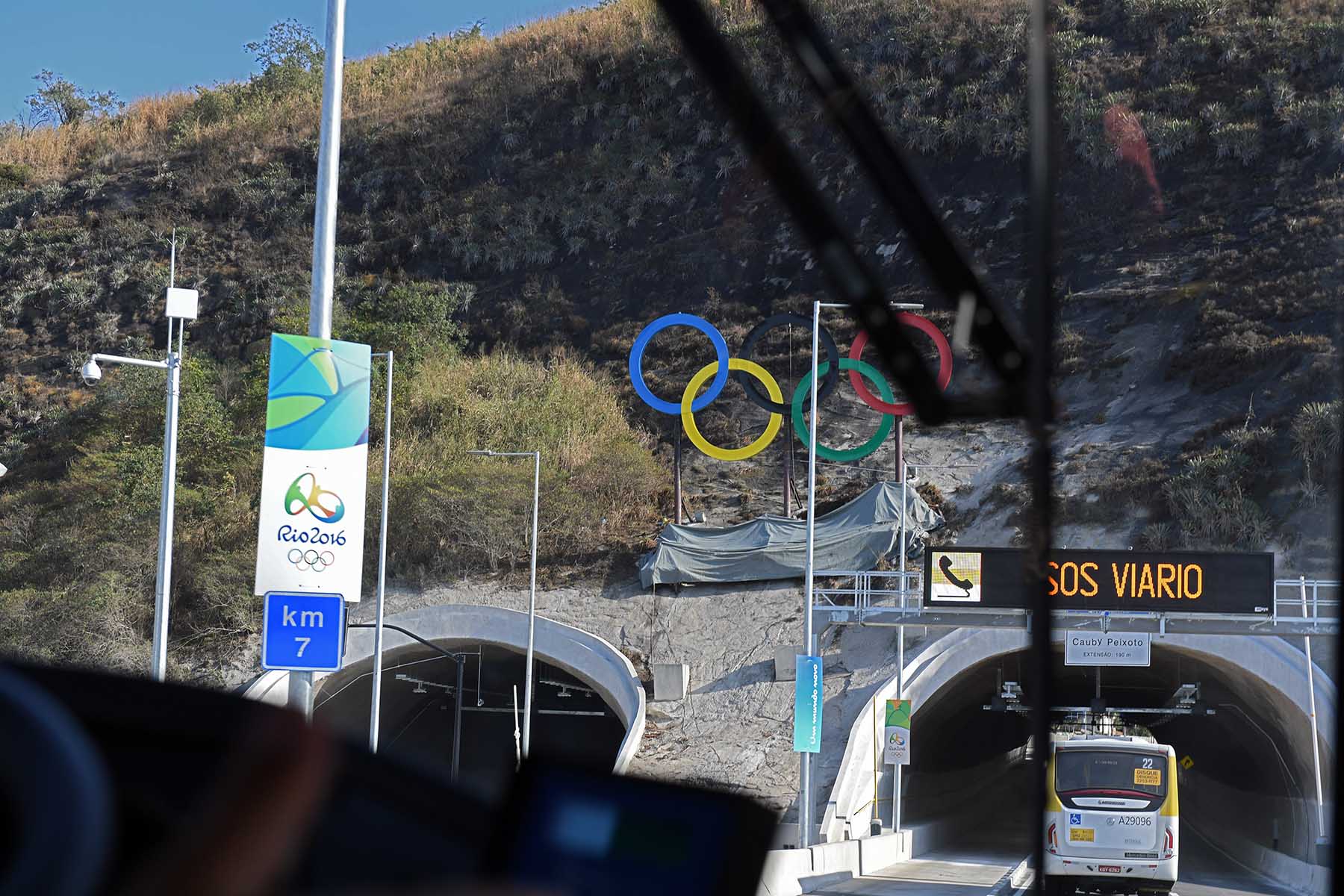
The amazing sights that Rio has to offer. We only had part of one day off, but we were determined to make the most of it.

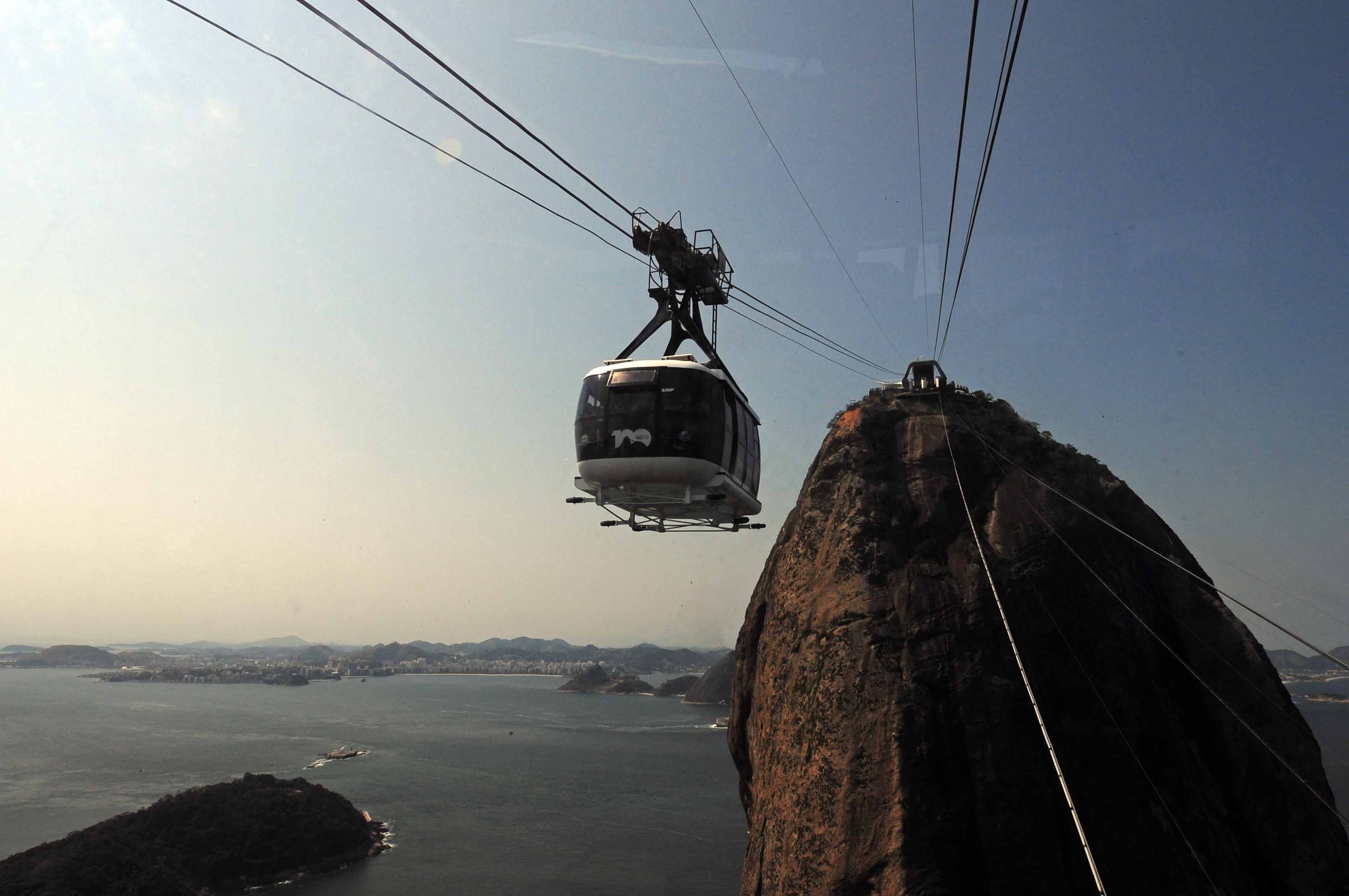
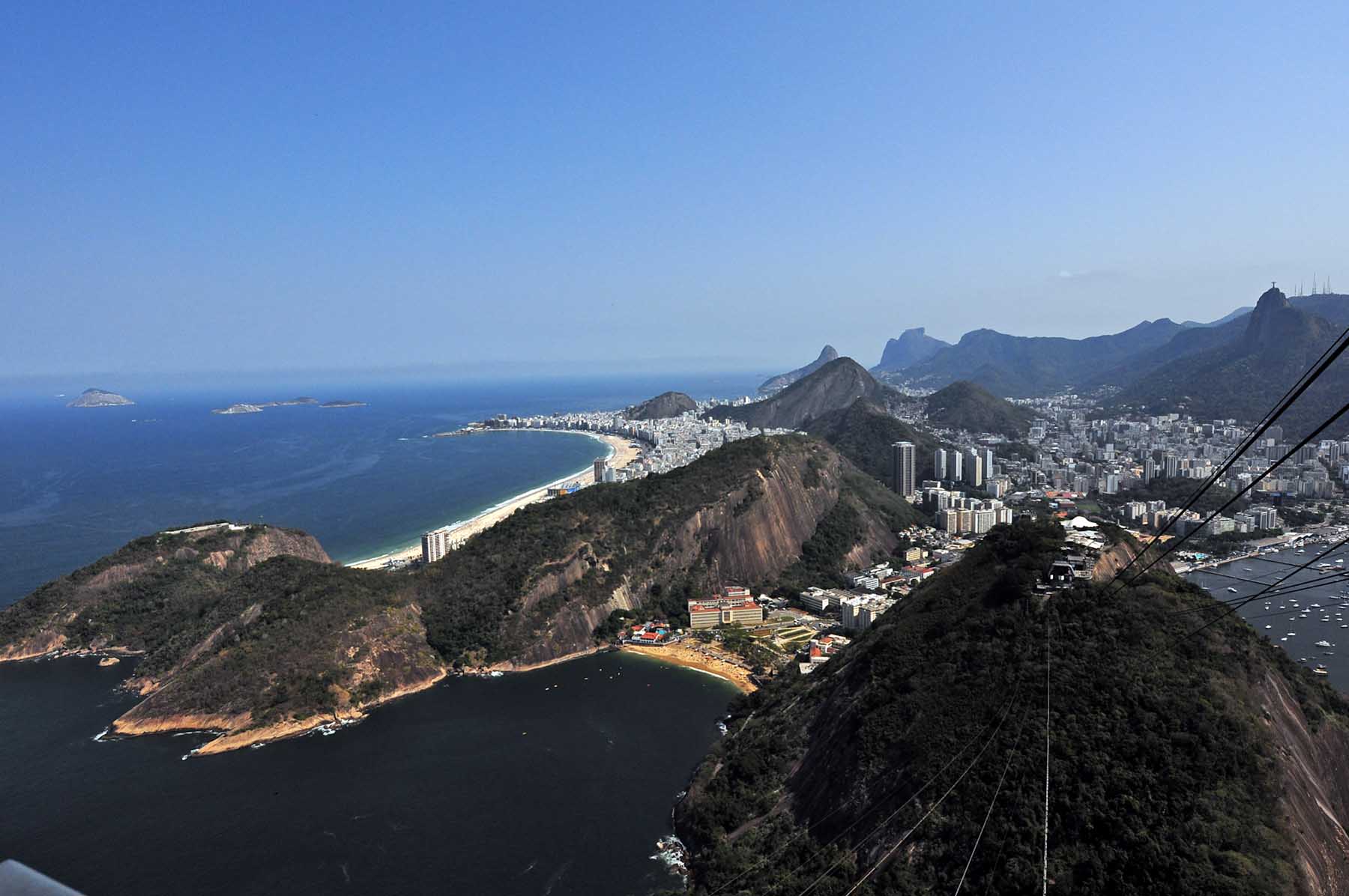
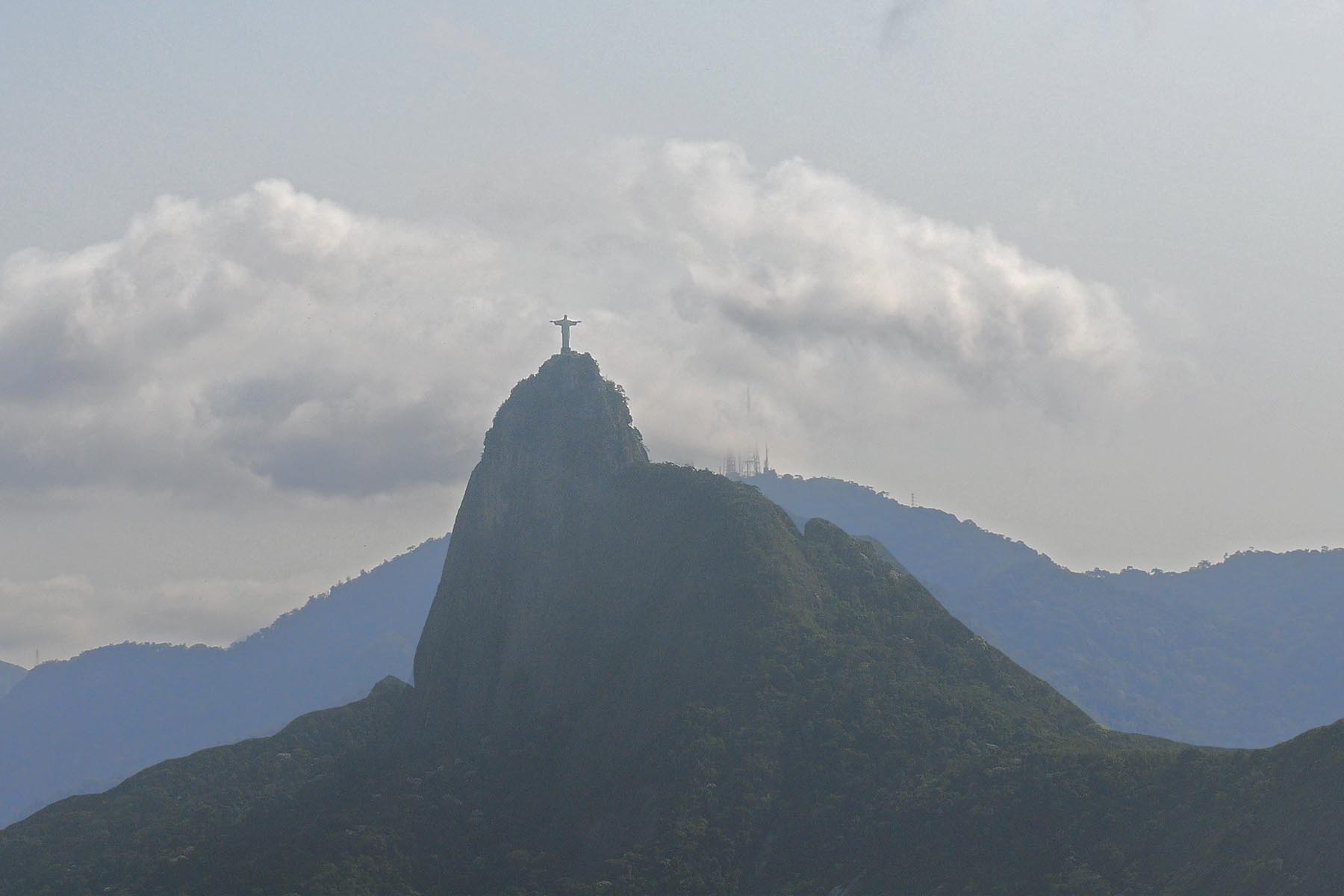
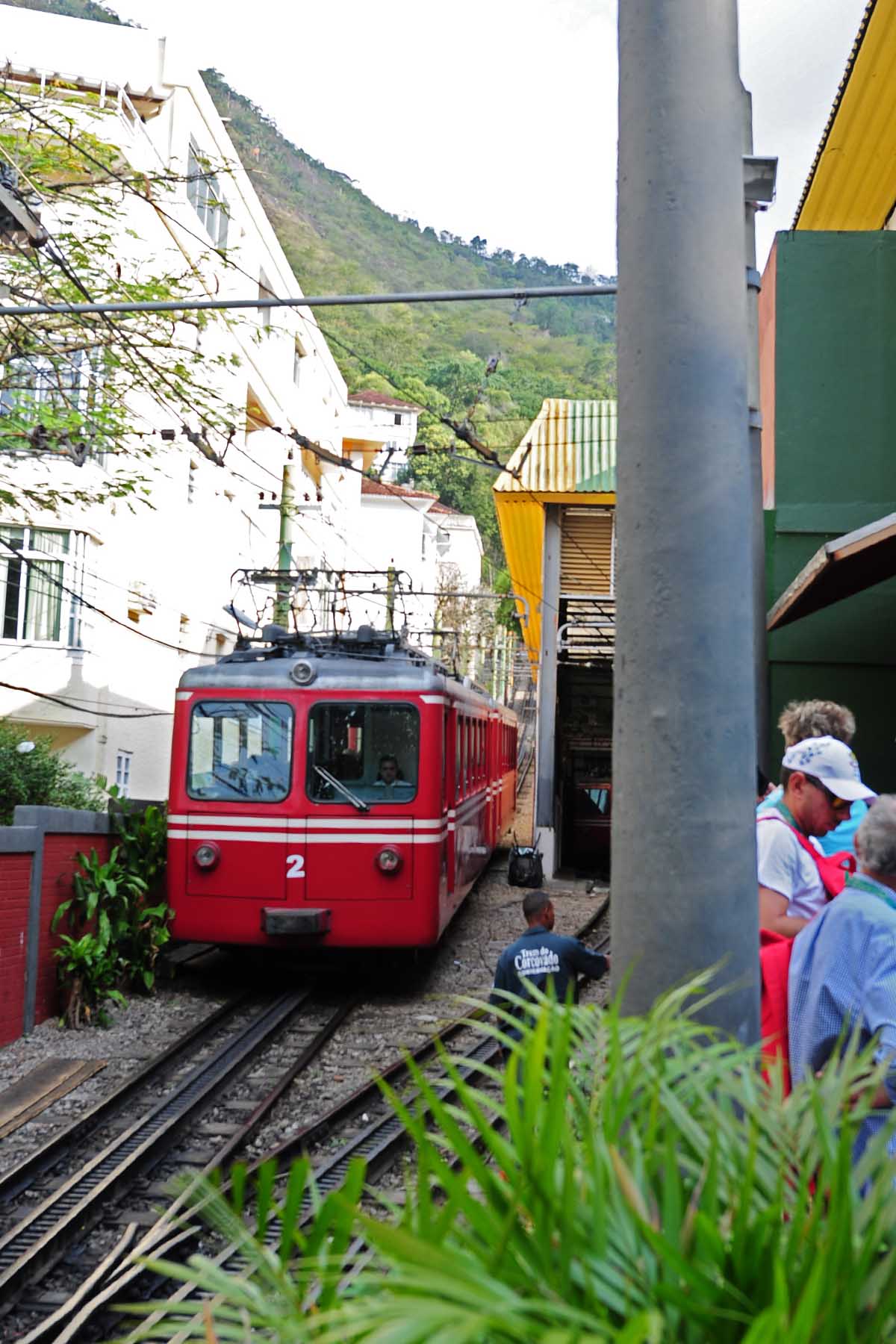

The neighborhood restaurant a block from our apartment in Barra. We only had a chance to eat there twice and we were never quite sure what we ordered, but it was always good and served with flair by the waiters there. They even passed out mosquito repellant for those of us who chose to sit on the porch to dine.



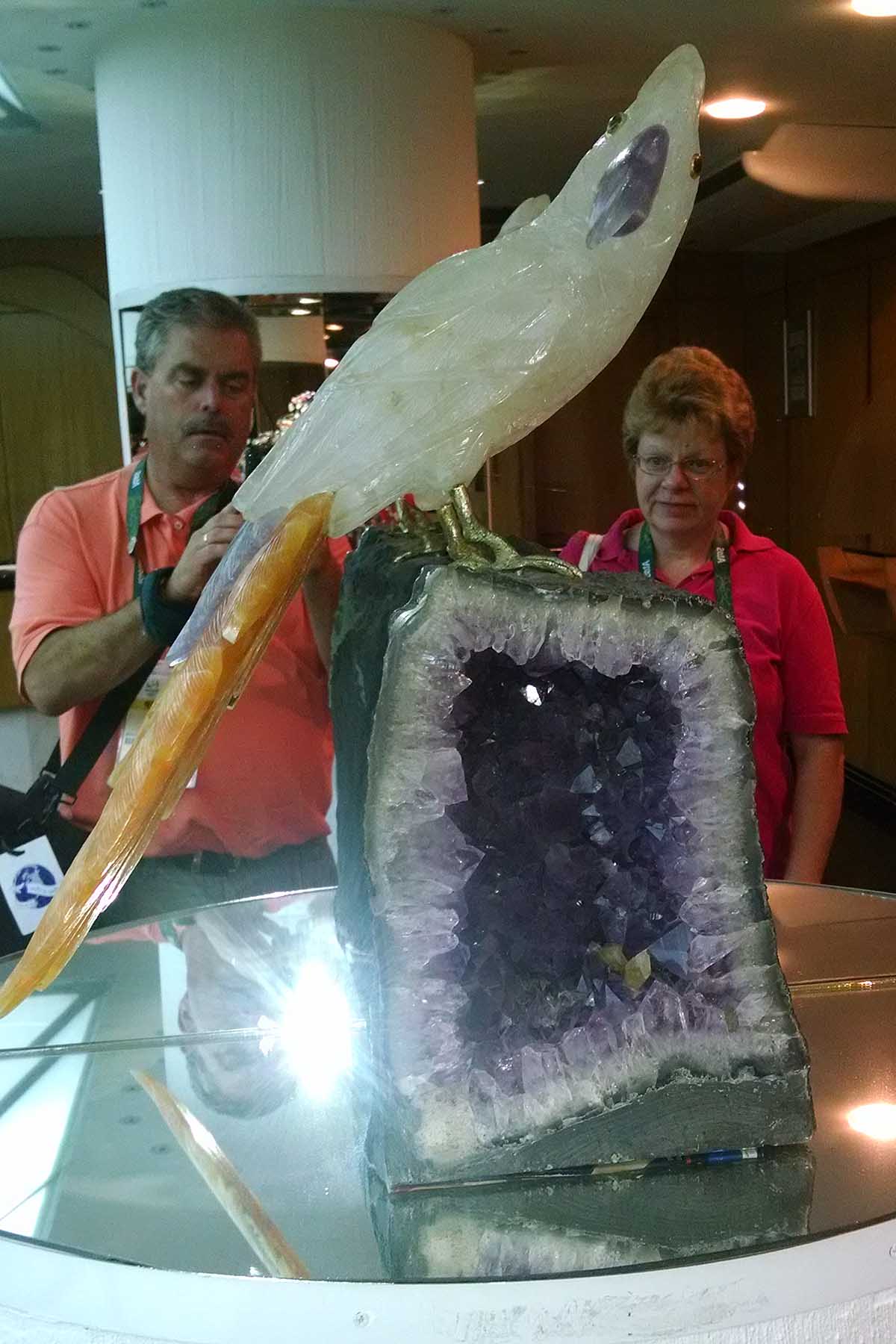
Looking Toward Tokyo in 2020
The International Olympic Committee continues to put pressure on the Fédération Équestre Internationale (FEI) to look at ways to revamp equestrian sports to make them more viewer-friendly for the general public. The possibility that equestrian sports could be eliminated from the Olympic roster altogether also comes up from time to time. On the positive side for equestrian sport, however, it was announced by the FEI this week that for the second Olympic Games in a row all equestrian athletes, both human and equine, produced clean drug tests.
In 2012 in London each country who qualified a dressage team were allowed only three team members (but with a fourth rider competing as an individual being possible.) In Rio countries who qualified to send dressage teams were allowed four team members again. The debate of three versus four-member equestrian teams caused much heated discussion in the press room in Rio. Time will tell how this sorts out for Tokyo in 2020.
Looking ahead to Tokyo, the Japanese riders have made great strides in proficiency in recent years. Japan sent full teams of four to compete in dressage and show jumping in Rio and two riders from Japan competed in eventing. Oiwa Yoshiaki riding The Duke of Cavan finished 20th in eventing jumping clear, but with time penalties, over the very difficult cross-country course to prove their mettle against the world’s best.
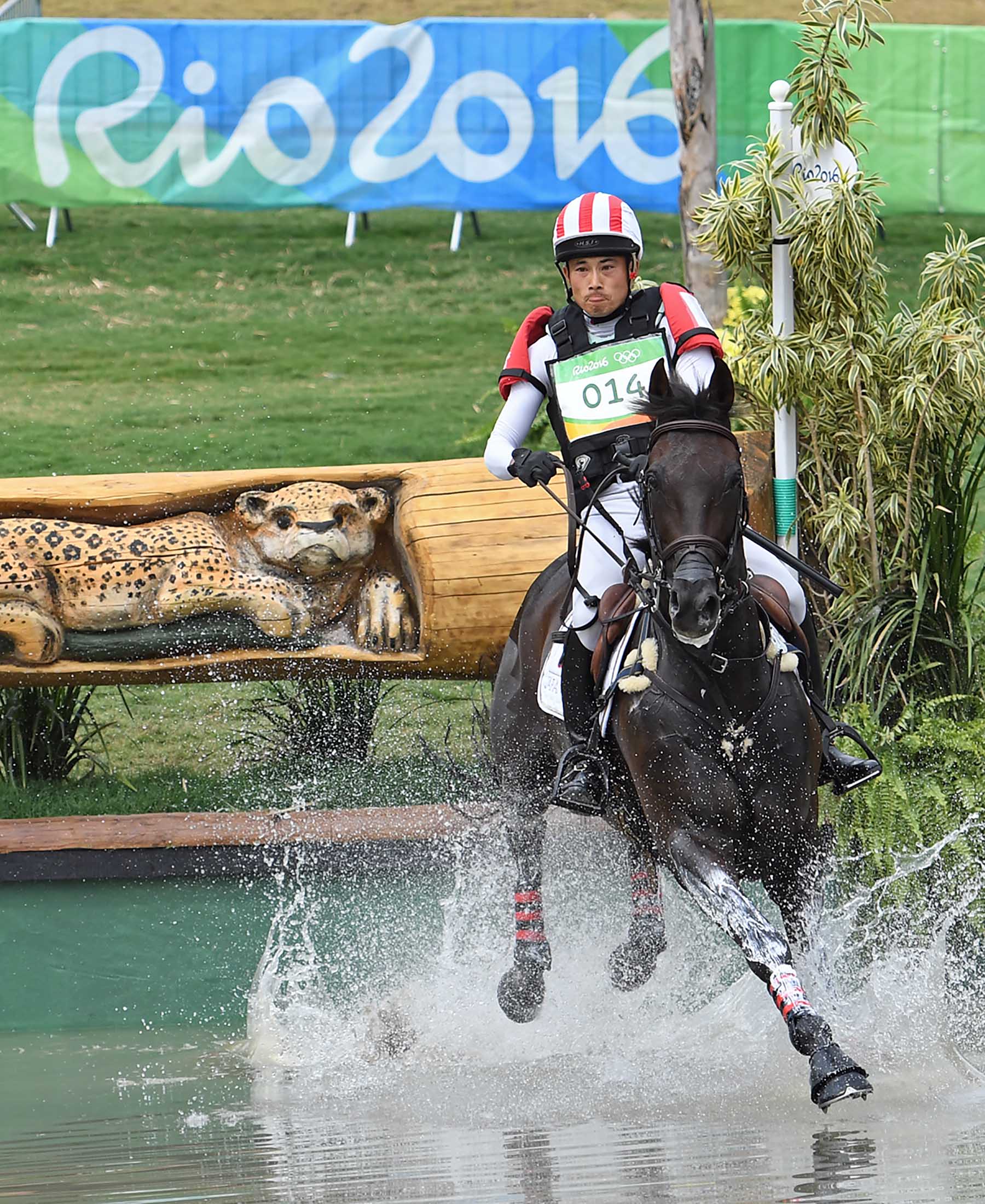
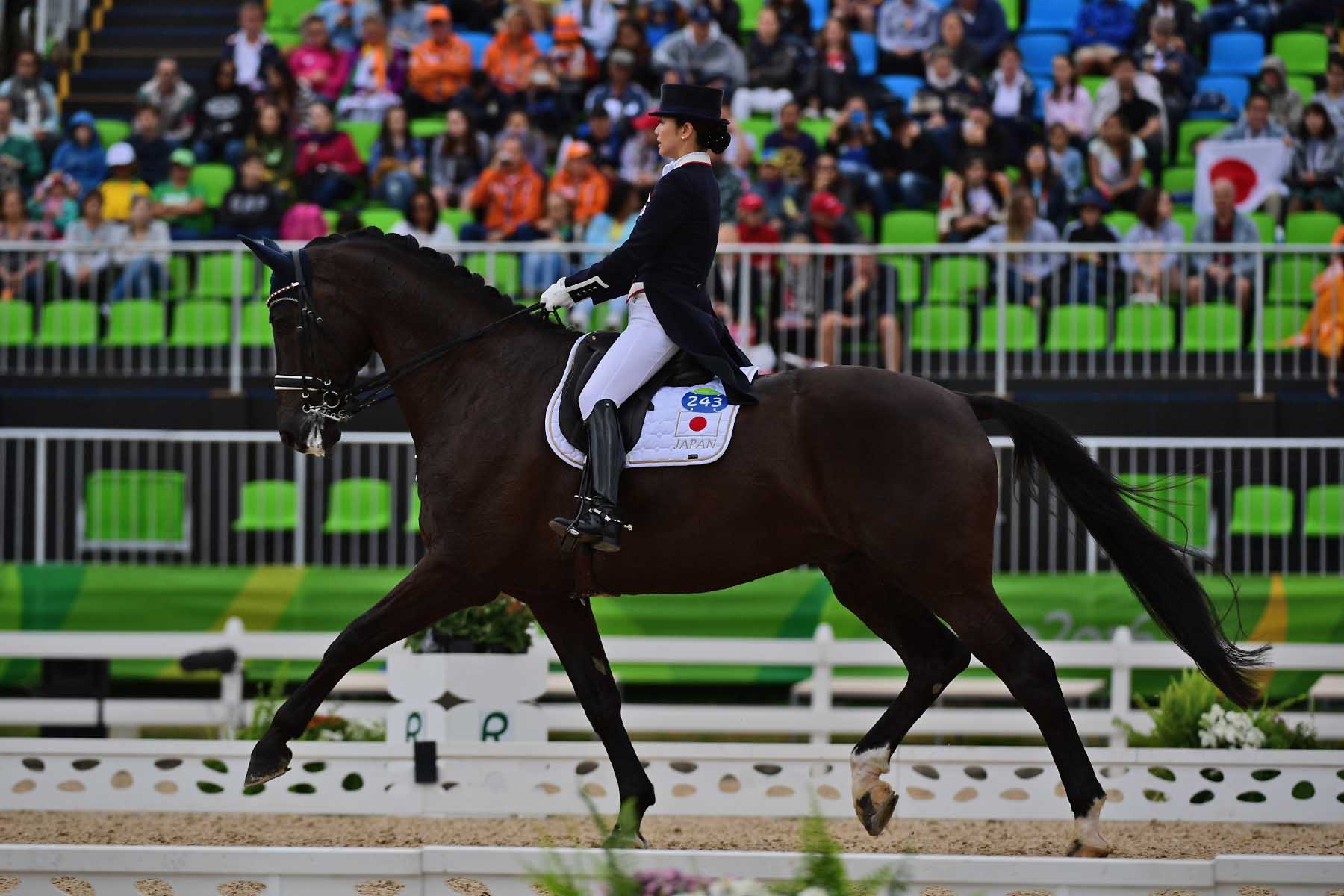
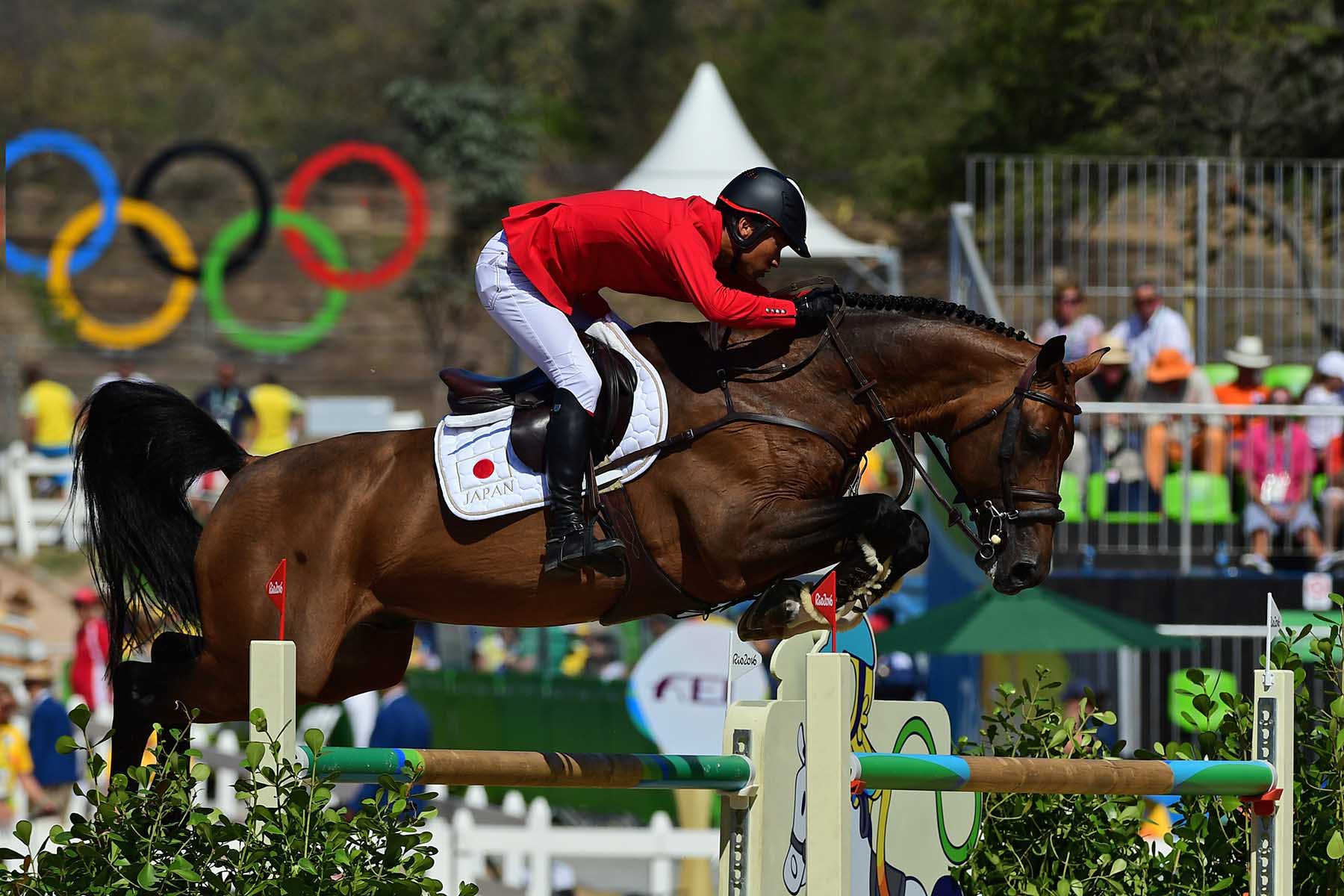
A Musical Farewell to Deodoro
As we were waiting to catch the bus back to the Main Press Center from the equestrian venue on the final day of jumping, a military band from the army base across the street marched toward us playing a tune. While their appearance seemed slightly bizarre, it was a fitting end to the 2016 Olympic equestrian competition. We cheered them on as we climbed onto the bus. So long Deodoro, it’s been an adventure!

